Please scroll down for updates. They are added after the original text.
An X1 flare was produced by sunspot region NOAA 2887 today 28 October at 15:35UT (see annotated SDO/HMI image below). This region has been already flare-active over the last few days, producing a flurry of C-class flares and a few low-level M-class events (see the STCE SWx classification page for more info on this and other parameters). The flare was responsible for a radio black-out (High Frequency, 3-30 MHz) over mainly the Latin-American region.
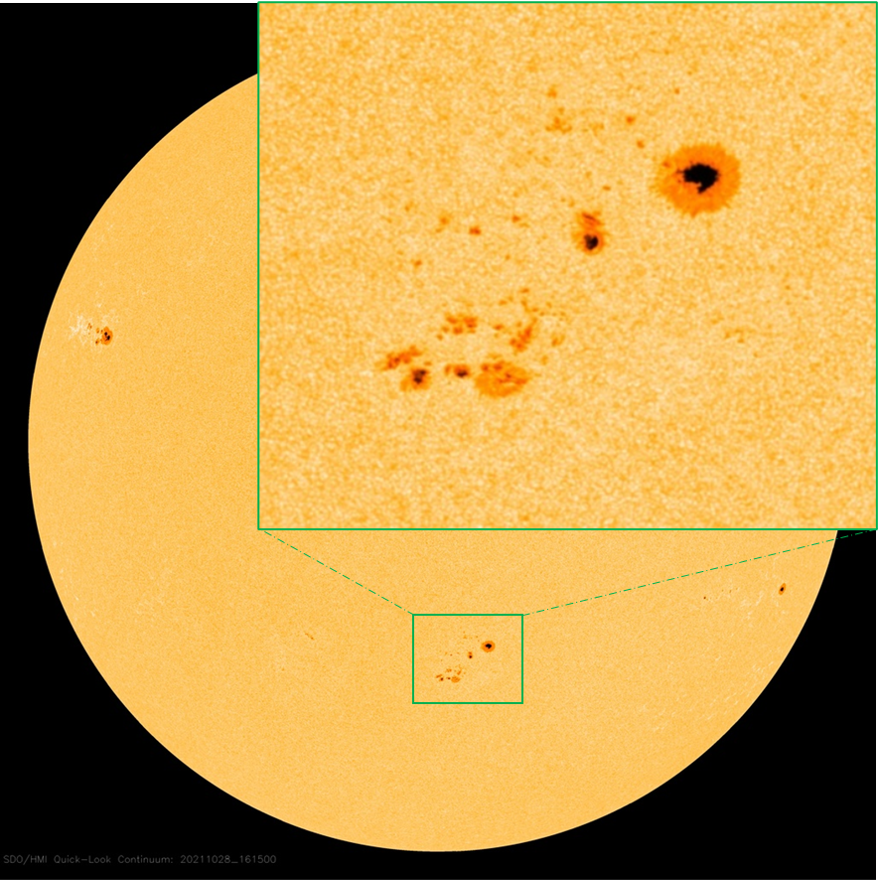
The images underneath were taken around the peak of the flare and are from SDO (2 extreme ultraviolet images on the left at temperatures of several million degrees and 80.000 degrees respectively), and on the right is an H-alpha image from the GONG network showing a view of the eruption at much lower temperatures and much lower in the Sun's atmosphere.
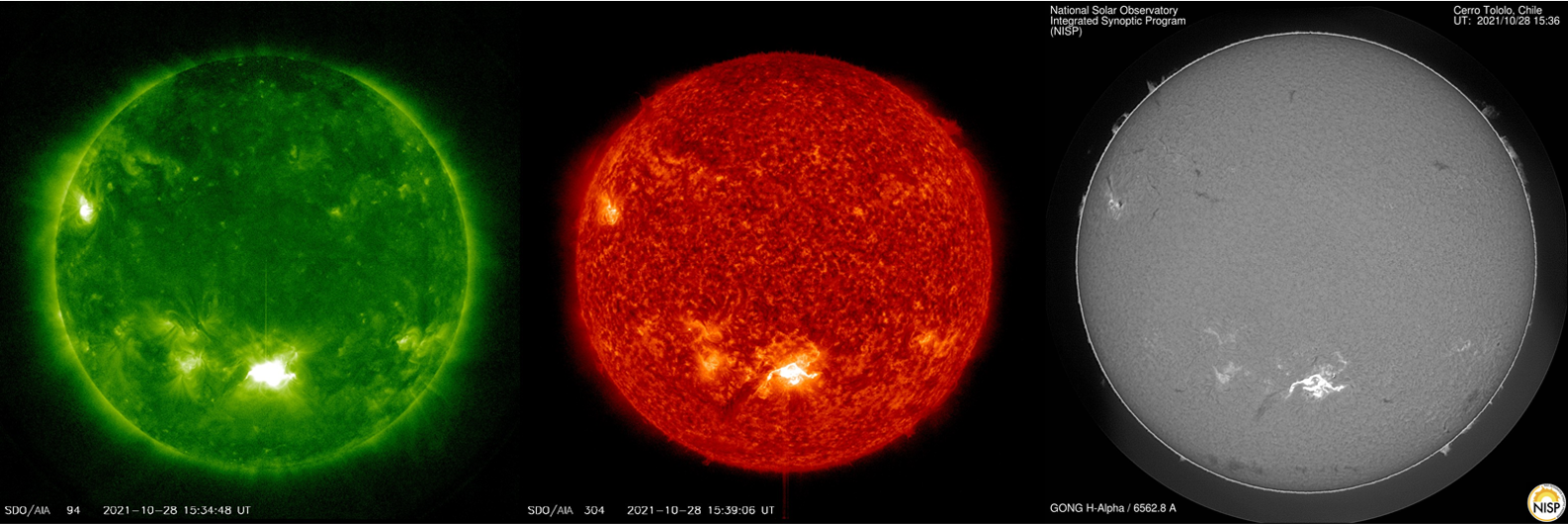
The greater than 10 MeV proton flux (GOES) has exceeded the alert threshold, but currently seems to be flattening. Some minor effects on HF radio frequencies over the polar regions are possible. This DRAP (NOAA/SWPC) imagery shows the influence from respectively the flaring event (top, Latin America affected) and from the increased proton flux (bottom, poles affected) on global HF communications.
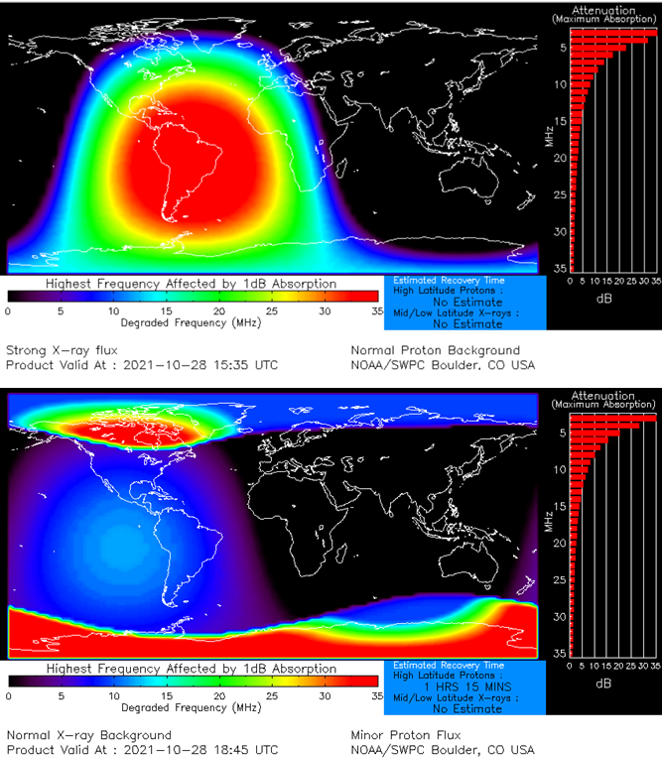
There was also an increase in the greater than 100 MeV proton flux, but it has flattened since about 18UT. This evolution has lead only to some minor increases in some of the ground-based neutron monitors (NMDB). Hence, this concerns only (so far) a minor solar radiation event. This may change in the next few days, if NOAA 2887 continues to be flare productive, as it is gradually getting into a position that allows a better magnetic connection with Earth.
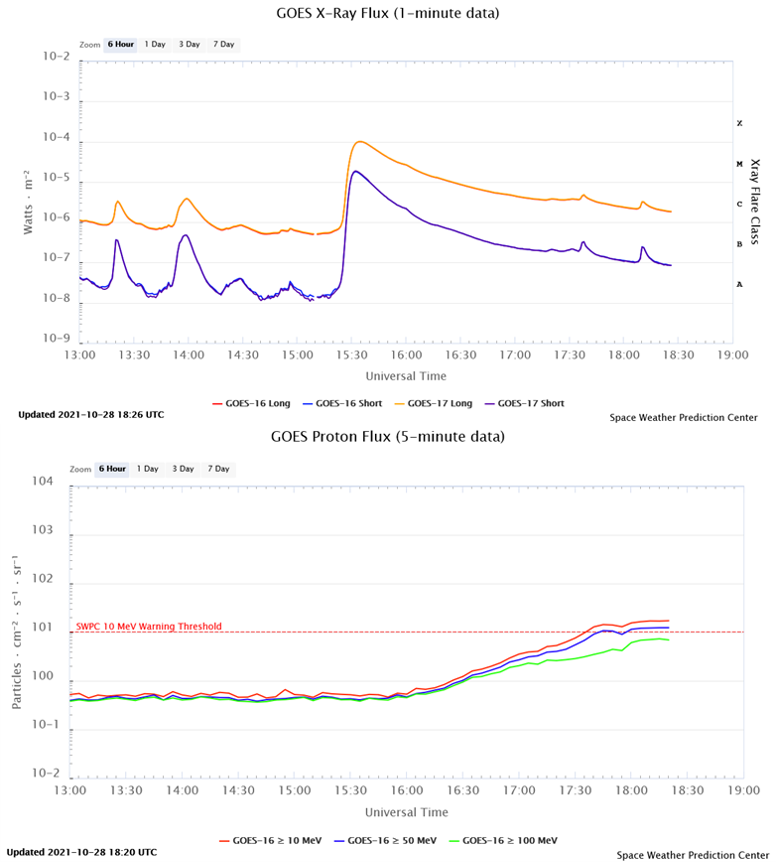
The flare itself was accompanied by a coronal dimming (a transient darkening in the Sun's outer atmosphere), as well as a coronal wave, both indicating that the eruption was accompanied by a coronal mass ejection (CME). The SIDC's Solar Demon software tool (see the animation underneath) provided images of these features in near real time, and are based on SDO/AIA 211 imagery.
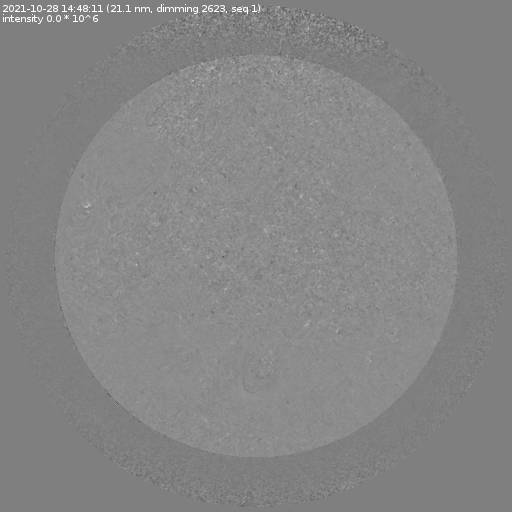
Another indication for a CME was the detection of a Type II radio-burst (see the STCE SWx classification page), indicative of a shock passing through the Sun's atmosphere. Based on data from NOAA/USAF Radio Solar telescope Network, this shock seems to move pretty fast, with a speed near 1450 km/s. Observations by the radio telescopes in Humain, Belgium confirmed also that this particular eruption produced only for a few minutes radio noise on GNSS frequencies, but was much more prominent on the frequencies between 200 and 650 MHz, This can be seen in the much intenser patches in the radio spectrogram underneath (time on the horizontal axis, frequencies on the vertical). Note the top portion in this graph shows the GOES x-ray flux.
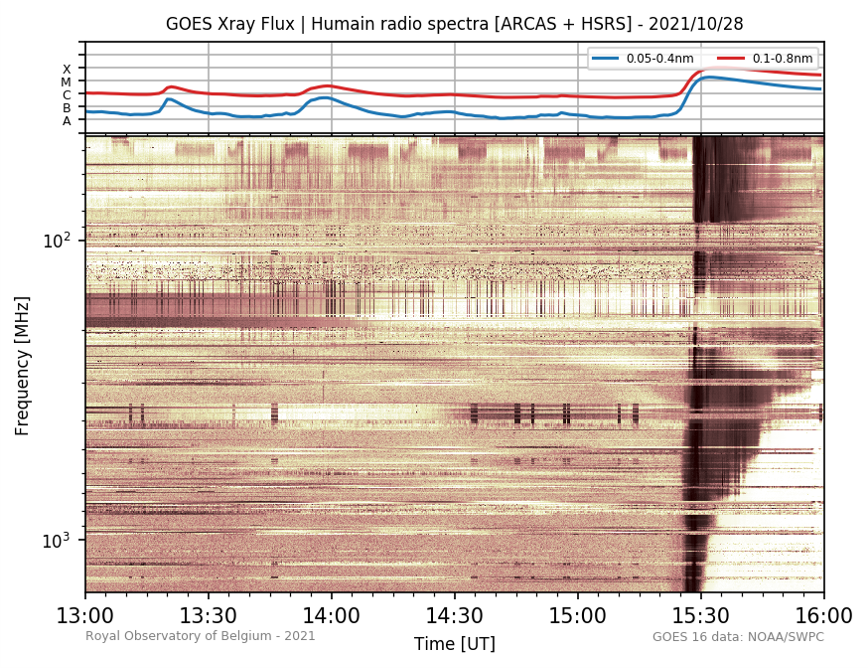
A CME is seen in the latest coronagraphic images available (from STEREO-A only). The CME seems to have a true speed in excess of 1000 km/s, but this needs a further finetuning with a lot more images., in particular from SoHO/LASCO. Most of the CME is directed south of the Sun-Earth line, but there's a clear earth-directed component too. Note there's another CME in the same line-of-sight, but this is from another, earlier event and not associated with the X-class eruption.
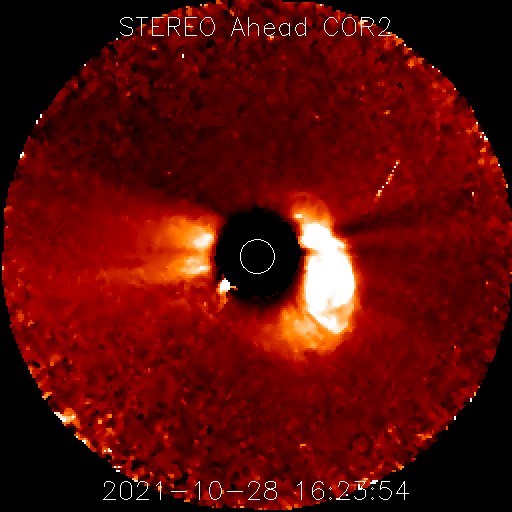
So, as space weather forecasters are standing by for more images, they are still out on the arrival time and intensity of the geomagnetic disturbance that may result when the CME hits the earth environment. Nonetheless, with the little data and imagery currently available, a strong geomagnetic storm taking place on 30 October might be a first educated guess. Stay tuned for further updates on these events as they enroll.
UPDATE 1 (issued on 29 October at 14:30UT)
With SOHO/LASCO imagery now in, it seems the CME had a speed somewhat lower than originally thought. As a result, the arrival of the coronal mass ejection (CME) at Earth is now expected around midnight on 30 October, with an uncertainty of 12 hours (so between noon on 30 October and noon on 31 October). The intensity of the ensuing geomagnetic disturbance is thought to range from a moderate to severe storming level (Kp: 6 to 8).
The Humain station of the Royal Observatory has updated its event page, providing a bit more information and better figures about this impressive radio event.
The proton event is still in progress. So far, a maximum of 29 pfu was reached early this morning (29 October, 02:50UT - GOES). The effects of this solar radiation storm remain minor. These numbers may still increase if a new solar eruption occurs, or during the passage of the associated CME. The greater than 100 MeV proton flux is decreasing. The observed small increase in the number of neutrons at some stations (NMDB graph), makes this event a candidate for a (small) Ground Level Enhancement (GLE #73), but this has to be confirmed. The neutron monitor in Dourbes, Belgium, did not record an obvious increase in the number of neutrons (DRBS in the graph).
Finally we conclude this update with 2 new movie clips. One from the SWAP instrument on board the PROBA2 satellite, showing the eruption in extreme ultraviolet at temperatures near 1 million degrees. The second clip is from the SOHO/LASCO C3 instrument, showing the fast and asymmetrc CME that was associated with this solar eruption.
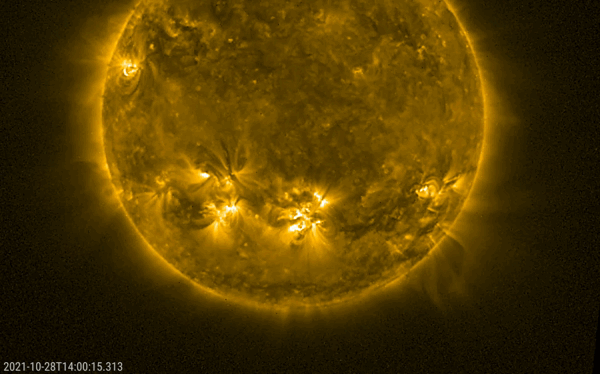

UPDATE 2 (issued on 31 October at 15:20UT)
A shock in the solar wind was observed on 31 October at 09:14UT (DSCOVR), most likely related to the CME observed on 28 October. Solar wind speed jumped from about 380 km/s to 420 km/s, then gradually increased to a maximum near 460 km/s around 11:15UT. Bz reached -11 nT, but was only sustained for about an hour. The resulting geomagnetic disturbance is mild, with NOAA/SWPC's Estimated Kp currently at 5 (minor geomagnetic storm) , and only active conditions recorded at Dourbes.The CME impact and associated geomagnetic disturbance are significantly weaker than expected, most likely because the CME was even further deflected southward than initially observed, hence the Earth encountered only the very outer flank of this interplanetary CME.
The proton event ended on 30 October at 21:30UT.





